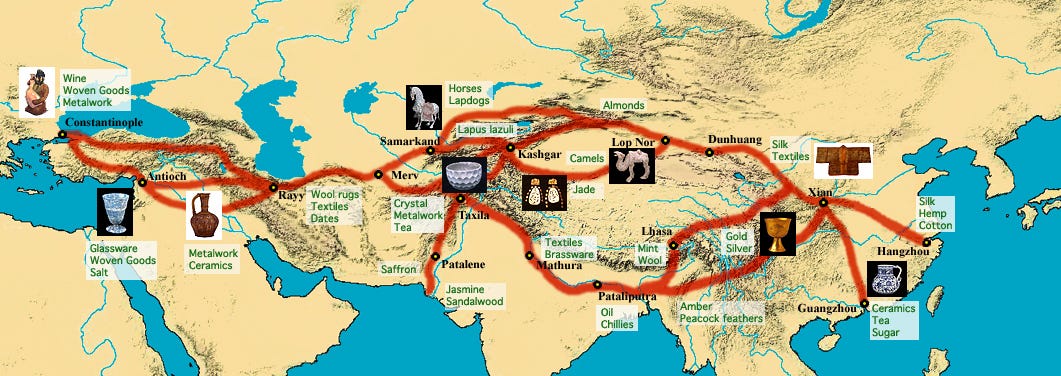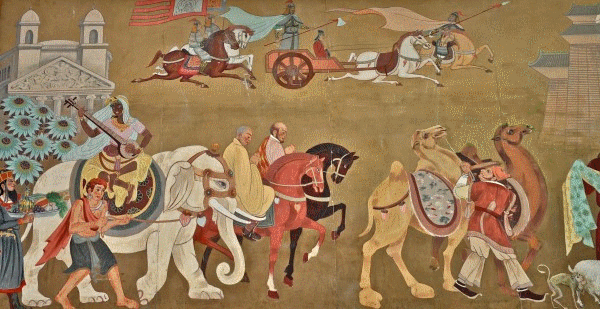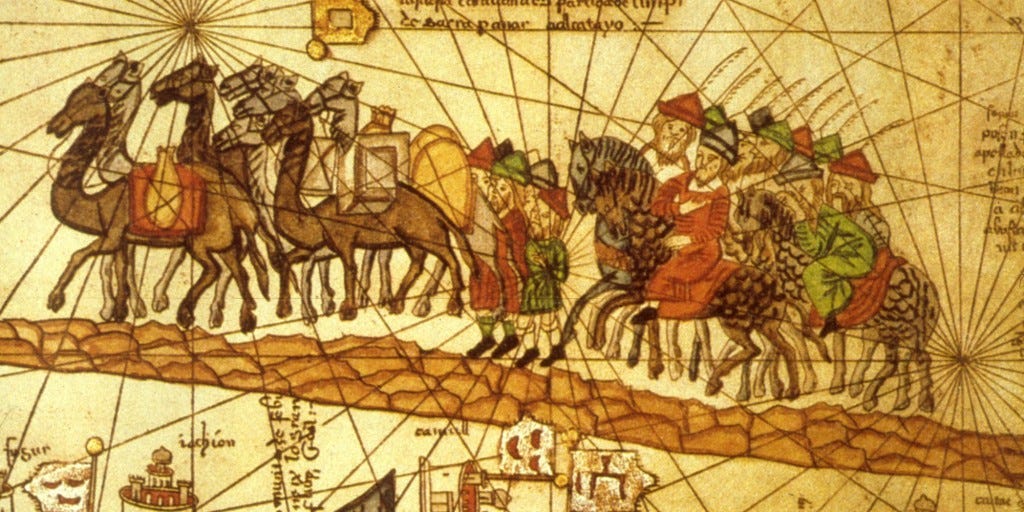The Silk Road
The silk road stories fire my imagination. It was the first time in human history that markets were no longer constrained to how far a person could walk in a day or two. The sheer doggedness of the traders who opened the various routes, the stories that are long forgotten, the hidden traces archaeologists sometimes turn up... It's easy to take this and overlay it onto a galactic scale for a Space opera. Or tell an alternate version in a world where magic smooths the way, but demands some price for that ease... Another of the essays I've written for class. And a bit of trivia - it was dubbed the Silk Road by Frederic Von Richtofen, the Red Baron's uncle, in 1877.

Some of the silk routes, and the goods that were to be found moving on it.
The Silk Road is twice a misnomer. It was not a single road, nor, as that term implies, maintained by any single entity – or even maintained at all along most of the lengths that were traveled. Although it had its origin roughly in China, and a terminus roughly in Europe, the reality is that it was many routes traveled from many places to reach more than one market in the Middle East, Europe, and India. Goods carried over the silk routes would wind up scattered across three continents, something no single road could accomplish.

The second misleading part of the name is silk. Although silk was carried by traders out of China they also packed many other luxury goods on the camels, horses, donkeys and backs of men. Spices were once worth more than their weight in gold to the flavor-hungry peoples that lived around the Mediterranean sea. The lowly peppercorn which we see as sort of a black dust to sprinkle on everything was carried along the Silk Road in slow, painful progress kept under lock and key and accompanied by armed guards. Luxuries were the stock in trade for the merchants who brought the silk routes to life. The weight of staple foodstuffs, iron or bronze, anything lowly in material, that kept it from being economical to transport along the Silk Road.

Caravan on the Silk Road
Alongside the tangibles like silk, spices, jewelry, and other goods, the Silk Road carried something even more revolutionary to the cultures who lay along its route. Disease stalked the caravans, stealing like shadows into towns they passed through, laying waste for a time before the people recovered with an immunity that left them stronger for their sufferings. To allay the pain of the epidemics, the traders also carried ideas, the compassion of Christianity and hope of Buddhism, the palliative effects of the mind on the body. It was through the traders that cultures met on equal footing, sharing religion, ideas, foods, dreams, and ultimately, the globalization of humanity.

Illustrated map depicting the journey of the Venetian merchant Marco Polo (1254 - 1324) along the silk road to China. (Photo by MPI/Getty Images)




